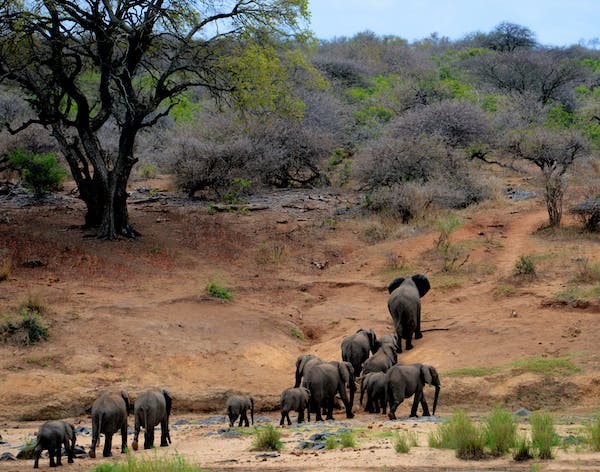Famous for its rugged mountain peaks to vast underground caverns, and groves of ancient bristlecone pines, the Great Basin National Park is located at White Pine County in east-central Nevada, near the Utah border.
The Park covers 77, 100 acres that seem to be barren yet is home to various flora and fauna species. Some oldest trees on Earth can be found on its steep mountain slopes. The Park’s bristlecone pines grow in secluded groves near the tree line, and it can survive for 4,000 years or more under extremely harsh conditions.
The summit of Wheeler Peak that stands at 13, 060 feet above sea level, is the highest point in the Park, and the lowest trail is the Mountain View Nature Trail, rising 6,825 feet above sea level.
Glaciers that cover most of the Park’s landscape add beauty to the area, such as the Lehman Rock Glacier, seen from the Glacier Trail and the Summit. You can see a remnant of an ice glacier formation that occurred about 10, 000 years ago, at Lehman Cirque just above the Lehman Rock Glacier.
The most famous Lehman Caves believed to have formed 2 to 5 million years back. During that time, a warm, shallow ocean covered the landscape. The limestone that comprised a large part of the area were formed from the shells of the dead sea creatures accumulated on the ocean floor.
History
For a very long time, the area has been inhabited. It was home to the 19th century’s fur trappers up to the group that archaeologists call the Paleo-Indians, who inhabited the area more than 12,000 years ago.
In 1878, John Muir, an environmental philosopher, made “a rambling and mountaineering journey” across Nevada, and in October, he climbed Mt. Wheeler. After a few years, H. Joseph Davis of the U.S. Coast and Geodetic Survey began to set up a heliotrope station on top of Mt. Wheeler. He put the stations on the highest mountains to use sunlight flashes to correct elevations and distances on the earth’s curved surface.
This early exploration documented has found the glacier and bristlecone pines as well as several alpine lakes.
In 1922, President Warren G. Harding issued a presidential proclamation to establish Lehman Caves National Monument, a one-mile square area around the caves’ entrance. From 1909-1986, the U.S. Forest Service managed all the regions included in the park.
During these times, the multiple-use policy was followed, which allowed grazing rights for livestock and firewood cutting. Hunting permits were also given. The landowners primarily opposed the movement to establish a national park in the area, and they had successful measures in blocking the legislation at the state and federal levels.
It was some 60 years after the first efforts to create a national park when finally, on October 27, 1986, that President Ronald Reagan signed the Great Basin National Park Act.
Things to Do in Great Basin National Park
Hiking
The park, just like other national parks, has the best trail routes for hikers. Prepare your backpack and other essentials to hike a few of the most known trails like Mountain View Nature Trail, Sky Island Forest Trail, Osceola Ditch Trail, Alpine Lakes Loop Trail, Lehman Creek Trail, and Bristlecone Trail. Make sure to stop at the visitor’s center before starting the trek to get the necessary information about the trail. There is a 10-mile drive up to Wheeler Peak to the Bristlecone trailhead and is steep and curvy, but it is very scenic since the trees and vegetation change at different altitudes.
Visit Lehman’s Cave
This cavern system is made of marble and limestone and is full of stalactites, stalagmites, flowstone, shield formations, and even cave bacon. You should not miss this important part of your tour in the park because it will give you more knowledge on how the park was established, and its colorful history. It was also featured in the movie Wizard of Mars.
Every year, the cave is open for a 60-90 minute tour. All you need to do is make a reservation.
Explore the Wheeler Peak Area
The Wheeler Peak is included in the mountains of Snake Range. It has an elevation of 13, 063 feet above sea level dominating the horizon with its jagged, treeless top. It’s like an alpine island in a sea of sage bushes. Passing through the Wheeler Peak Scenic Drive will lead you on a path that winds quickly up the mountainside, leaving the desert floor far behind. You can enjoy it if you stop at various overlooks and indulge your eyes with expansive views that stretch for 100 miles and beyond.
Stargazing
This is of course if you wish to stay overnight at the Park, but it’s really worth it. The park has some of the darkest night skies in the U.S. due to its remote location, high elevation, and desert air. What is more remarkable is the visibility of five planets, countless stars, and meteors and the Milky Way that can be seen by your naked eyes! The park became an official International Dark Sky Park.

